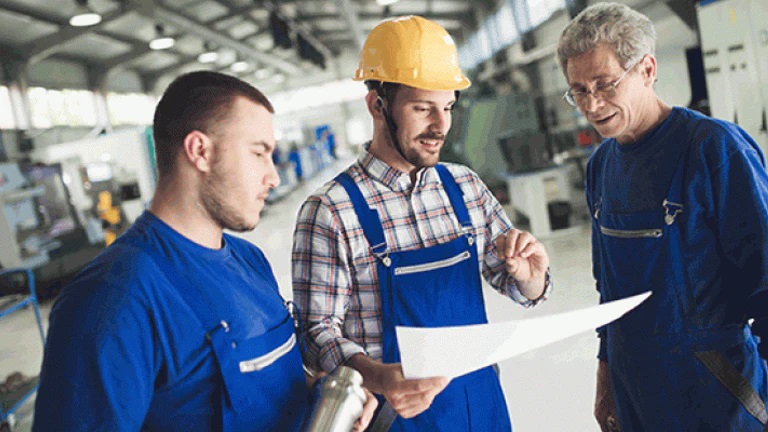The construction industry is among the riskiest industries when it comes to health and safety. In 2019, around 20% of worker fatalities in private industry were in construction, showing the seriousness of having a comprehensive health and safety program in the industry.
A safety program is essential to ensure the construction company’s operation is reliable, sustainable, and above all, safe for its workers, and a core aspect of a safety program is to identify hazards and the associated risks via a Hazard Identification and Risk Assessment (HIRA) effort.
By identifying undesirable events and potential hazards, we can create and implement control methods to mitigate these hazards, which in turn, can help improve the safety of complex operations common in the construction industry.
HIRA In Construction Safety: Key Principle
The basic principle behind HIRA is that hazards must be identified before we can control and tackle these hazards.
Not all risks are made equal, some are tolerable, some would require certain control methods, and some are intolerable and should be completely eliminated from the construction business.
The earlier a construction business performs HIRA, the safer and more cost-effective the future safe operations will be. The identified risks and hazards from the HIRA effort would be the foundation of the construction safety management program.
On the other hand, inaccurate identification and/or perception of hazards could lead to various safety issues such as accepting risks that shouldn’t be tolerated, inefficient operations, or excessive usage of hazardous resources, among others.
Implementing HIRA In Construction Safety: Four Core Steps
The HIRA process can be achieved in four core steps:
- Hazard identification
- Risk assessment
- Risk analysis
- Control, monitor and review
Step 1: Hazard Identification
Hazards in construction work can be identified in several different ways, but mainly it will involve a safety audit process.
A construction health and safety management software like iReportSource can help the construction business in performing an accurate and streamlined safety audit process.
The safety audit process may include:
- Workplace inspections: establishing a system for recognizing hazardous conditions including observation of the workplace environment, identification of tasks, consideration of patterns of work, and so on.
- Accident investigations: identifying hazards and risks that caused accidents or near misses.
- Employee complaints: collecting data from employee complaints and observations, including incident, injury, and illness reports.
- Consultant: hiring external or internal consultants to perform the safety audit.
Based on the safety audit process, list the identified hazards, including but not limited to:
- Natural hazards
- Chemical hazards or other hazardous materials
- Fire
- Explosion
- Workplace violence
- Disease
- Terrorism
- Cybersecurity threats
- Supplier failure
- Mechanical breakdown
- Utility outage
Step 2: Risk Assessment
Once the hazard has been identified, the next step is to perform a risk assessment.
Rush assessment is assessing what risk each hazard poses to various assets of the construction business, including:
- People (workers, clients, vendors, etc.)
- Software infrastructure
- Hardware infrastructure and equipment
- Building and other properties
- Regulatory compliance and contractual obligations
- Reputation and credibility
The risk assessment should identify the probability of risks, as well as the potential severity of identified hazards. Based on this information we can prioritize control methods and corrective actions for each hazard.
To summarize, risk assessment is estimating what is the probability of an accident happening in the construction business, and what’s the impact when it does happen:
- The chances that someone will be injured (or worse)
- The extent of damages to equipment, property, or environment
- How severe the impact will be depending on the exposure of the hazard and other factors
Step 3: Risk Analysis
The next step, risk analysis, further examines the frequency and potential consequences of the identified hazards, as discovered in steps 1 and 2.
- Frequency analysis
The focus here is to identify how likely it is that a hazard will occur (with enough negative impact) that may result in severe risks and emergency conditions.
Ideally, the frequency should be estimated by calculating the number of times the event has occurred in the past, but some hazards might not have a long enough historical record for this. In this case, estimation should be considered based on the best resources available.
- Consequence analysis
We can divide potential consequences into several groups:
- Human consequences: fatalities, injuries, illnesses
- Property consequences: damages on structures, buildings, or other properties
- Business consequences: economic and/or social impacts of the hazard, including reputational damage
- Critical infrastructure consequences: damage to critical facilities and lifelines
- Environmental damage: negative effects to the hazard
Step 4: Control, Monitor, and Review
Based on risk assessment and risk analysis in the previous steps, we can create and implement the necessary control measures to prevent the risks or at least mitigate the potential damages. Another possible solution is to transfer the risks associated with the hazards.
This stage is mainly about determining and implementing appropriate control measures in our construction business while considering the data you’ve identified from the risk assessment and risk analysis steps discussed above.
For each hazard, we should apply a control method by following these principles:
- Eliminate hazards completely whenever possible as the main priority
- When elimination is not possible, change the people, equipment, environment, material, and/or process with safer alternatives
- When substitution is not possible, implement administrative controls:
- Providing comprehensive written guidelines and manuals
- Intensive monitoring of the use of hazardous materials
- Intensive site safety training
- Limiting exposure time to hazardous environments and materials
- Provide Personal Protective Equipment (PPE) as the last resort when all of the above is not possible
Closing Thoughts
Hazard Identification and Risk Assessment (HIRA) is the most essential aspect when planning and implementing a construction safety program. A HIRA process will help the construction business to identify the risk levels of the hazards so the business can prioritize risks, and to ensure that there is a formal process for identifying hazards, assessing risks, and control to effectively manage hazards.








Add Comment